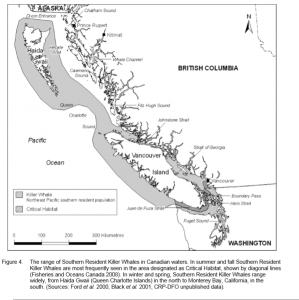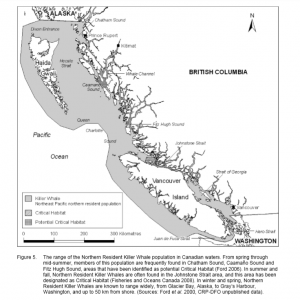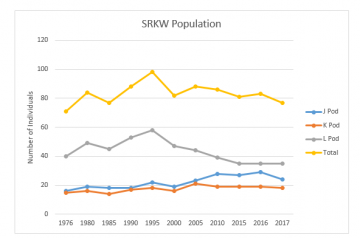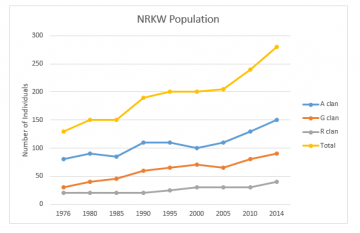If you’re like us, you’ve probably been hearing a lot about the Southern (SRKW) and Northern (NRKW) resident killer whales (Orcinus orca) on the news or scrolling through social media. They have been the center of a public media storm documenting the severe population decline of the SRKW. Our lab wanted to know more about who these populations are, what makes them so special and why the SRKW are in such big trouble. We are compiling long term data for environmental correlates of both resident populations including salmon stock estimates, pollutants, water conditions and boat traffic. We’ve created this blog to make our findings accessible and easy to digest, by keeping you updated along the way.
So, let’s start off by asking, what makes killer whales different than other whales?
Despite that orcas are commonly known as killer whales, they are actually the largest member of the family Delphinidae, the dolphin family, under the suborder of Odontoceti, distancing them from humpbacks and grey whales by their teeth (Center for Whale Research, 2018). Orcas spend their lives as members or tight knit family groups called pods of between 10-40 individuals and often stay in the same pod as their mother and siblings for their entire lives (Canadian Wildlife Federation, 2018). Like other whales, orcas communicate through echolocation and have different unique dialects in each pod (Canadian Wildlife Federation, 2018).
SRKW and NRKW feed primarily on salmon and specifically on Chinook and Chum (COSEWIC, 2008). From approximately May – September they are primarily eating Chinook, in October they are eating mainly Chum and from November – April their diet is undocumented (COSEWIC, 2008). Limited amounts of Coho will be eaten from June through October (COSEWIC, 2018). Orcas are unique in their feeding, as they strategically coordinate in groups to hunt prey (Marine Mammal Research Program, 2017).
Who are the resident killer whales?
The SRKW are comprised of three pods totaling 76 individuals as of December, 2017 including J pod (23 individuals), K pod (18 individuals) and L pod (35 individuals) (Center for Whale Research, 2018). J pod has two mature males, K Pod has three mature males and L pod has six mature males (Center for whale Research, 2018). Between 1960 and 1975 there was a decrease in SRKW populations due to marine parks capturing individuals for captivity (Center for Whale Research, 2018). J pod was recently in the spotlight after the death of J35’s calf, whose body she kept with her for 17 days after the calf died.
The NRKW are comprised of three clans A, G and R made up of 16 pods, whose population has actually been increasing since the first count in 1976 at 122 individuals (Ellis et al., 2011). In 2010, 261 individuals were counted which indicates a 2.1% average annual growth rate of the population with the greatest progress in A clan at an average annual growth rate of 3.8% (Ellis et al., 2011). The NRKW are the only orca population in the world known to engage in “beach rubbing” where they rub their bodies on stones in the shallow waters of beaches (Marine Mammal Research Program, 2017). While the NRKW have received a lot less attention in the media, we are interested in finding out why they are so successful in comparison to their SRKW neighbors.
Where do they live?
SRKW and NRKW both reside in the Pacific Ocean, with overlapping boundaries, despite the fact that the populations don’t interact. Throughout the year the SRKW range from Haida Gwaii all the way to Monteray Bay California and are primarily just South of Vancouver Island in the summers (COSEWIC, 2008). From Puget Sound and Southwards the SRKW will not overlap with NRKW (COSEWIC, 2008). J pod specifically will appear all year in and around the San Juan and Southern Gulf Islands, Puget Sound and the Georgia Strait (Center for Whale Research, 2018). In 2008, critical habitat for SRKW was designated in the Strait of Juan de Fuca, Haro Strait, Boundary Pass, the Southern Gulf Islands, and the Southern section of the Georgia Strait (COSEWIC, 2008).

Southern Resident Killer Whales Geographic Range (COSEWIC, 2008)
The NRKW range from Vancouver Island all the way to Southeastern Alaska throughout the year (COSEWIC, 2008). In the summer and fall they are primarily found in SE Alaska (COSEWIC, 2008). Their range overlaps with NRKW in Johnstone Strait, the Strait of Georgia, Haro Strait, the Juan de Fuca Strait, West of Vancouver Island and in and around the Queen Charlotte Sound (COSEWIC, 2008). Up and around Haida Gwaii, NRKW habitat also encompasses Dixon Entrance, Hecate Strait, Caamano Sound, Fitz Hugh Sound, Chatham Sound and Whale channel (COSEWIC, 2008). In 2008, critical habitat for NRKW was designated in the Johnstone Strait (COSEWIC, 2008).

Northern Resident Killer Whales Geographic Range (COSEWIC, 2008)
Population:
Monitoring of both the SRKW and NRKW began in 1976 through the Center for Whale Research. While the NRKW population has been steadily increasing, the SRKW population has been variable and unpredictable with many deaths and low infant survival (COSEWIC, 2018; Towers et al., 2015; COSEWIC, 2018).

Data retrieved from: Center for Whale Research, 2018.

Data retrieved from: Towers et al., 2015.
Check back in soon for more information and updates regarding B.C.’s resident killer whales.
References:
Canadian Wildlife Federation. (2018). Orca Whale. Retrieved from: http://cwffcf.org/en/resources/encyclopedias/fauna/mammals/orca-whale-1.html
Center for Whale Research. (2018). Retrieved from: https://www.whaleresearch.com/
COSEWIC. (2008). Assessment and Update Status report of the Killer Whale. Committee on the Status of Endangered Wildlife in Canada.
COSEWIC. (2018) Recovery Strategy for the Northern and Southern Resident Killer Whales in Canada. Species at Risk Public Registry.
Ellis, G.M., Towers, J.R., and Ford, J.K.B. (2011). Northern Resident Killer Whales of British Columbia: Photo-identification Catalogue and Population Status to 2010. Canadian Technical Report of Fisheries and Aquatic Sciences 2942.
Marine Mammal Research Program. (2017). Whale Facts. Retrieved from: https://killerwhale.vanaqua.org/page.aspx?pid=1209
Towers, J. R., Ellis, G.M., Ford, J. K. B.. (2015). Photo-identification catalogue and status of the Northern Resident Killer Whale population in 2014. Canadian Technical Report of Fisheries and Aquatic Sciences 3139.